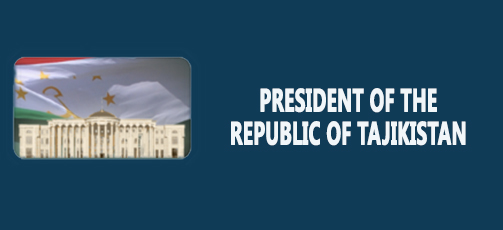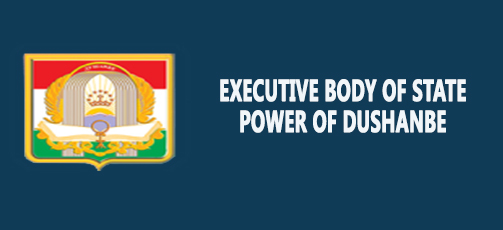Head of State Emomali Rahmon Opens New Building of the Supreme Court
Read also

DUSHANBE, 05.12.2024 (NIAT Khovar) – On December 5, the President of the Republic of Tajikistan, Leader of the Nation, Honorable Emomali Rahmon, and the Chairman of the Majlisi milli Majlisi Oli of the Republic of Tajikistan, Mayor of Dushanbe, Honorable Rustami Emomali, commissioned a new, more beautiful and modern building of the Supreme Court of the Republic of Tajikistan in the Ismoili Somoni district.
The building of the Supreme Court consists of 15 floors, and its construction was carried out by the Directorate for the Construction of Government Facilities of the Executive Office of the President of the Republic of Tajikistan at a cost of about 185 million somoni from budget funds, with high quality and in compliance with construction standards.
The Head of State was informed that the new building of the Supreme Court has 171 working rooms, a conference hall with 400 seats, 8 court hearing halls, an archive of court cases, rooms for receiving citizens, a place for holding defendants, a press-conference hall, a traditional and electronic library, a canteen and other auxiliary facilities, and all rooms are equipped according to the required standards.
The Leader of the Nation, Honorable Emomali Rahmon, during his acquaintance with the capabilities of the new building, highly appreciated the quality of construction work, calling the facility a worthy gift from the Government of the Republic of Tajikistan to the country’s judicial staff on the occasion of the 35th anniversary of the State Independence of the Republic of Tajikistan.
During his visit to the new building of the Supreme Court, the Head of State, Honorable Emomali Rahmon, noted that, using the created conditions, employees of the judicial authorities are obliged to properly protect the rights and freedoms of individuals and citizens, the interests of the state, organizations and institutions, legality and justice, and ensure the rule of law.
The construction of a new and modern building of the Supreme Court of the Republic of Tajikistan on one of the central streets of the country’s capital will add more beauty to Dushanbe and is a logical continuation of the practical implementation of the constructive policy of the highest political leadership of Tajikistan and the capital’s municipality.
It should be noted that the former building of the Supreme Court of the Republic of Tajikistan, located on Nemat Karaboev Street, was put into operation as a cultural hall in the 1970s and did not fully meet the requirements of the judicial authorities. The lack of working rooms, courtrooms, meeting rooms and other facilities led to the construction of a new building of the Supreme Court, under the guidance and instructions of the Leader of the Nation, Emomali Rahmon. This initiative of the Leader of the Nation was warmly welcomed by the country’s judicial authorities.
It should be noted that the Government of the country is constantly taking practical measures to ensure the independence of the judiciary by increasing the working units of judges and court staff, boosting the financing of judicial authorities, providing courts with modern buildings and equipment, etc.
In general, creating the necessary material and technical conditions, especially providing city and district courts with modern buildings and equipment, is of particular interest.
It is with the direct initiatives and instructions of the President of the Republic of Tajikistan, Emomali Rahmon, that the judiciary, along with other sectors of the country, has been developing and improving in recent years.
With the funding of the Government of the Republic of Tajikistan, court buildings were rebuilt and put into operation in 14 cities and districts of the republic during 2000-2024.
Improving the social status of judges, in particular providing them with official housing and gradually increasing their salaries, is one of the factors strengthening the judicial power. During 2000-2024, with the attention of the Government of the republic, 80 employees of the judicial authorities of the regions, cities and districts of the country were provided with official housing and plots of land.











 President Emomali Rahmon makes personnel appointments in the structures of the Ministry of Internal Affairs
President Emomali Rahmon makes personnel appointments in the structures of the Ministry of Internal Affairs President Emomali Rahmon makes personnel appointments
President Emomali Rahmon makes personnel appointments Commentary to orders of the President of the Republic of Tajikistan on the republican competitions «Tajikistan – My Dear Homeland», «Science – Dawn of Enlightenment» and «Book – Dawn of Knowledge» in 2026
Commentary to orders of the President of the Republic of Tajikistan on the republican competitions «Tajikistan – My Dear Homeland», «Science – Dawn of Enlightenment» and «Book – Dawn of Knowledge» in 2026 Emomali Rahmon, Vladimir Putin discuss strengthening strategic partnership between two countries
Emomali Rahmon, Vladimir Putin discuss strengthening strategic partnership between two countries New Year Address of the President of Tajikistan to the Nation
New Year Address of the President of Tajikistan to the Nation Meeting of the Government of the Republic of Tajikistan
Meeting of the Government of the Republic of Tajikistan President Emomali Rahmon attended inauguration of administrative building in military unit No. 3503 of Internal Troops in Bokhtar
President Emomali Rahmon attended inauguration of administrative building in military unit No. 3503 of Internal Troops in Bokhtar Head of state Emomali Rahmon attended inauguration of additional educational building of the Innovative Medical College in Bokhtar
Head of state Emomali Rahmon attended inauguration of additional educational building of the Innovative Medical College in Bokhtar President Emomali Rahmon attended opening of Bokhtar State University’s student dormitory
President Emomali Rahmon attended opening of Bokhtar State University’s student dormitory President Emomali Rahmon participated in commissioning of an educational facility and an industrial enterprise in Levakant and Vakhsh
President Emomali Rahmon participated in commissioning of an educational facility and an industrial enterprise in Levakant and Vakhsh President Emomali Rahmon attended opening of secondary school No. 17 in Bokhtar
President Emomali Rahmon attended opening of secondary school No. 17 in Bokhtar














